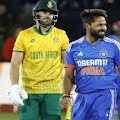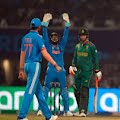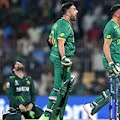It has been a while since the field restrictions have been put in place in the one-dayers, and with the modifications in the power play rule coming into force in recent times, scoring at less than a run a ball has become almost criminal in one-day cricket. However, every now and then there comes an innings which reiterates that there is still place for the traditional way of play in the game. One such innings was played by Hashim Amla in the opening ODI of the much-awaited series against Sri Lanka being played in the island nation. In spite of the massive change in the way ODIs have been played over the last decade, Amla has not changed his style of play, and his success on Sunday was vindication of his beliefs.
South Africa have an extremely poor record in Sri Lanka, and they needed an assuring start for them to give them the confidence to do well in the series. This is where Amla's knock was so significant. He batted with complete authority, rarely looking in any sort of trouble in spite of the conditions favouring the hosts. His 109 came off 130 balls, which translates to a strike rate of 83. It may be slow by today's standards, but set the tone of the innings for the Proteas. Amla held the innings together, as he has so often done for the side in Tests and ODIs. The knock was also significant since it was the first international game South Africa were playing since Amla was announced as the Test skipper ahead of AB de Villiers.
There were actually dual positives for South Africa in the batting department. Not only did Amla get a hundred, the current ODI skipper de Villiers also chipped in with a handsome contribution. A few days back de Villiers had candidly admitted that he was disappointed at not having gotten the Test captaincy since he had genuinely harboured hopes of the same. In such a situation, it was important for South Africa to see whether AB had his mind in the right place going into the series. It was crucial that neither of them -- Amla and AB -- were distracted with the goings off the field. From what transpired in the first ODI, the South African dressing room should be extremely pleased.
Going into the series, it was no suspense that South Africa's biggest nemesis was going to be spin. The series is still only one match old, but the visitors, who have historically struggled against spin, showed encouraging signs. Ajantha Mendis, their main spinner, finished with three wickets, but was taken for over six runs an over. Further, Sachchitra Senanayake, who went for a little under five, was given only one wicket. South Africa were also comfortable against the pace of Lasith Malinga and Nuwan Kulasekara, which made their batting performance a completely all-round effort. David Miller and Ryan McLaren chipped in with worthy contributions towards the end.
While South Africa put up a big score on the board, they still needed to perform well with the ball. In an age of field restrictions and power plays, 300 is no longer a safe total. However, like with their batting, South Africa put up a composed show with the ball as well. Morne Morkel dealt the early blows, and McLaren chipped away at the wickets before Imran Tahir came in and broke the back bone of the batting. Vernon Philander struck an early blow even as Dale Steyn returned to clean up the tail. In a nutshell, it was a thoroughly professional bowling effort too from South Africa, one that should encourage them to go on to achieve better things on the tough tour.
--By A Cricket Analyst














